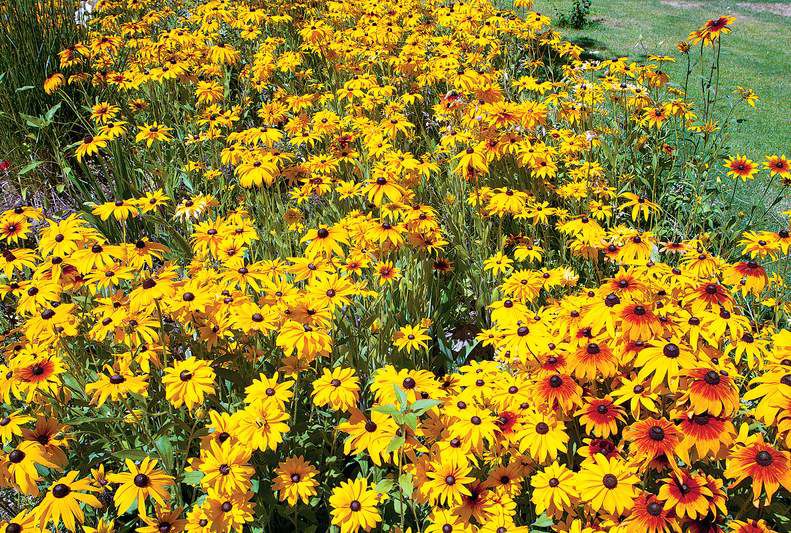Late-blooming flowers for fall
Published 5:00 am Tuesday, August 30, 2011

- Black-eyed Susans are a good bloomer for later in the growing season. Be sure to augment Central Oregon’s nutrient-short soil. Compost is a good option.
Inevitably blooms on summer flowers fade as fall approaches. Wouldn’t it be nice to have some color in your flower bed in the fall?
To extend your flower bed growing season, consider planting some blooming varieties that will produce well into the cooler weather and last until that first hard frost. The key to fall flower success, according to Richard Cloward, owner of Galveston Gardens in Bend, is matching the location with the plants and preparing the soil correctly.
Trending
“Success with fall flowers may depend on where you live,” Cloward said. “The east side of Bend is about two weeks ahead of the west side when it comes to warming up in the spring, and it gets a little bit longer growing season.”
Central Oregon is warmest in the northern part, around Terrebonne, Culver and Madras, because of the lower elevations, according to Cloward.
The coldest area is La Pine, which is about 1,000 feet higher than Bend.
“We’re mostly talking about nighttime temperatures,” he said, “because the low can’t go much below the 50s for flowers to bloom.”
Central Oregon has an estimated 10,000 microclimates and the same lot or yard may have several.
To plant fall flowers, Cloward said, first look for a location that will have full sun and as little shade as possible. Areas that are protected from the wind and weather will be better spots for flowers than those that are more exposed.
Trending
Soil preparation is also important, he added, since Central Oregon’s soil is typically sandy, loose and lacking in nutrients.
“You don’t necessarily want to have potting soil, but you can’t have hardpan,” Cloward said. “The soil in the bed should have some amendments, depending on the variety you plant. Some of the native flowers won’t need as much as other varieties.”
Compost is a good soil amendment, he said, because it adds structure and increases the soil’s ability to hold moisture. Other good materials include aged cow or horse manure, decayed leaves and various organic additives. It is a good idea to check the acidity of the soil before planting, he added, and fertilizing will depend on the variety planted.
Cloward recommended the following fall plant varieties:
Autumn joy (sedum hybrid): These will have a pink flower and will start blooming shortly after they are planted.
Pansies: Available in a variety of colors, with dark green leaves, pansies work well in pots and window boxes as well as in flower beds. These colorful, small flowers can flourish through the late fall and up to the first snow, said Cloward. Pansies may also come up on their own in the spring, he added.
Kale: Known primarily as a nutritious vegetable with powerful antioxidant properties, kale grows like a head of cabbage and produces a beautiful flower head. The flowers can be a variety of colors, including white and purple.
Decorative grasses: Different varieties of grasses will produce beautiful seed heads and lend color to other settings, Cloward said. There are several variegated reed grasses that end up with heads that look like wheat; he recommends a popular choice, a feather reed grass “Cheju-Do.”
Bee balm (monarda): This plant is often used in beds and borders to encourage and increase the appearance of hummingbirds and pollinating insects. Some people get the wrong idea because of the name and think the monarda will attract too many bees, Cloward said. But all blooming flowers attract bees, he said, and the bees pollinate all the plants.
Black-eyed Susan (rudbeckia): A common American wildflower, the characteristic brown, domed center is surrounded by bright yellow ray florets.
Hosta (asparagaceae): These plants like the shade and will grow and flower as long as it doesn’t get too cold. The plants will blossom in the next month or so, Cloward said, and the various-colored leaves are also attractive.
Day lily (hemerocallis): There are many flower buds on each day lily flower stalk, and many stalks in each clump of plants, so the flowering period of a clump is usually several weeks long. And day lilies have more than one flowering period.








